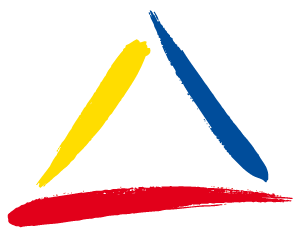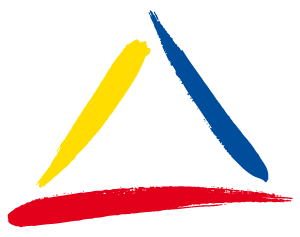WORKSHOPS FREIBURG
SUMMER WORKSHOPS IN FREIBURG 2025
The Studio in Freiburg with 10 places is located near the centre in the beautiful district of Wiehre and is well equipped for all the workshops. A perfect place to develop ideas and learn new techniques. The history of the city of Freiburg is closely linked to silver mining. In the Middle Ages there were also many gem cutting places. A complete historic grinding workshop has been preserved in nearby Waldkirch, which can be visited by appointment. Freiburg is described as one of the most popular Towns worldwide in the lonely Planet travel guide. Accommodation should therefore be booked early. The historic part of the city is also the lively centre of today's Freiburg. The landmark of Freiburg is the Cathedral, whose tower is one of the masterpieces of Gothic architecture. Around the cathedral and the spacious cathedral square, visitors discover the secretive alleys and impressive buildings of the historic old town, which offer a picturesque and colourful contrast to the weekly market. In addition, there are numerous museums, galleries and theatres, the many restaurants offer international dishes. Freiburg is a sun-spoiled place and its location makes it an excellent starting point for day trips to the Black Forest or to the bathing lakes.
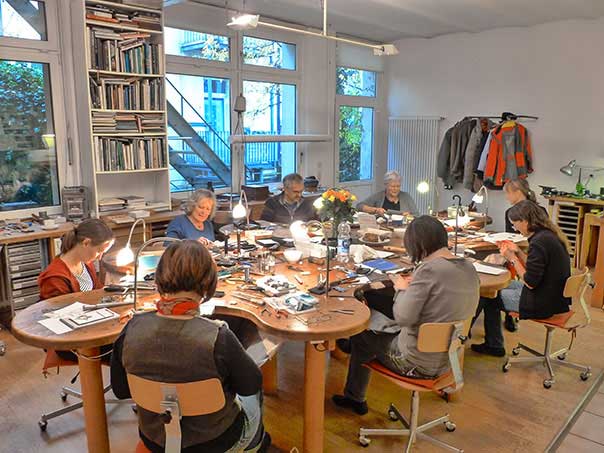
The workshop in Zasiusstraße in Freiburg's Wiehre district was originally an Blacksmith location. After extensive renovation work, a jewelry workshop with up to 10 workplaces was created.
Information on accommodation options:
www.visit.freiburg.de
Course workshop Freiburg
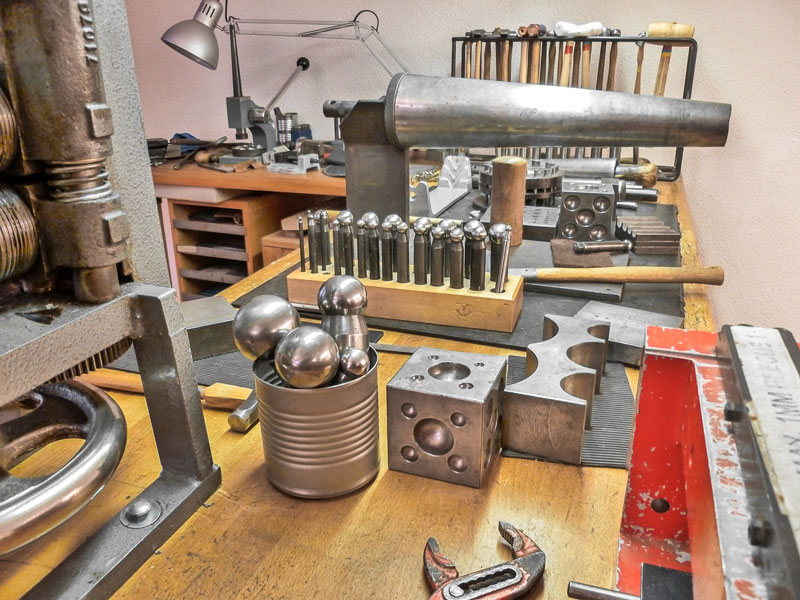
Nr. |
Date |
Theme |
Teacher |
Price € |
|
Fee CHF |
|
|
|
|
|
|
|
|
|
06 |
Juli 20th – 25th |
Benedetti |
790,- |
|
790,- |
|
|
|
|
|
|
|
|
|
|
08 |
August 03th – 08th |
Deval |
790,- |
|
790,- |
|
|
|
|
|
|
|
|
|
|
09 |
August 10th – 15th |
Zock |
790,- |
|
790,- |
|
|
|
|
|
|
|
|
There will be no courses from August 16th to September 13th
|
10 |
September 14th – 19th |
Schulte |
790,- |
|
790,- |
|
|
|
|
|
|
|
|
|
|
11 |
September 21th – 26th |
Schulte |
790,- |
|
790,- |
|
|
|
|
|
|
|
|
The prices shown include the course fee only. Please request detailed programs.
6 Jewellery with Paper
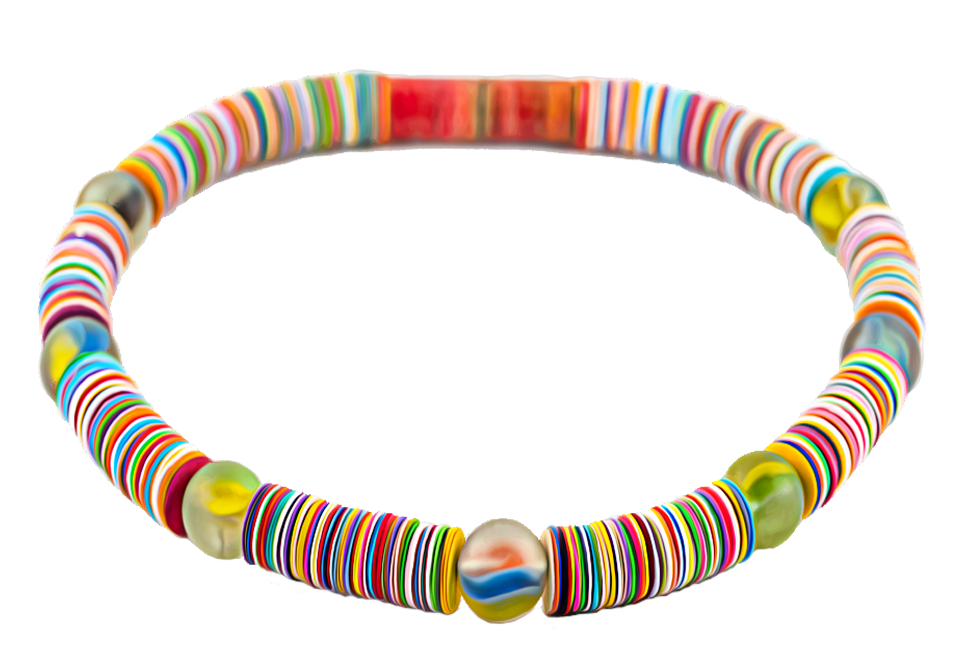
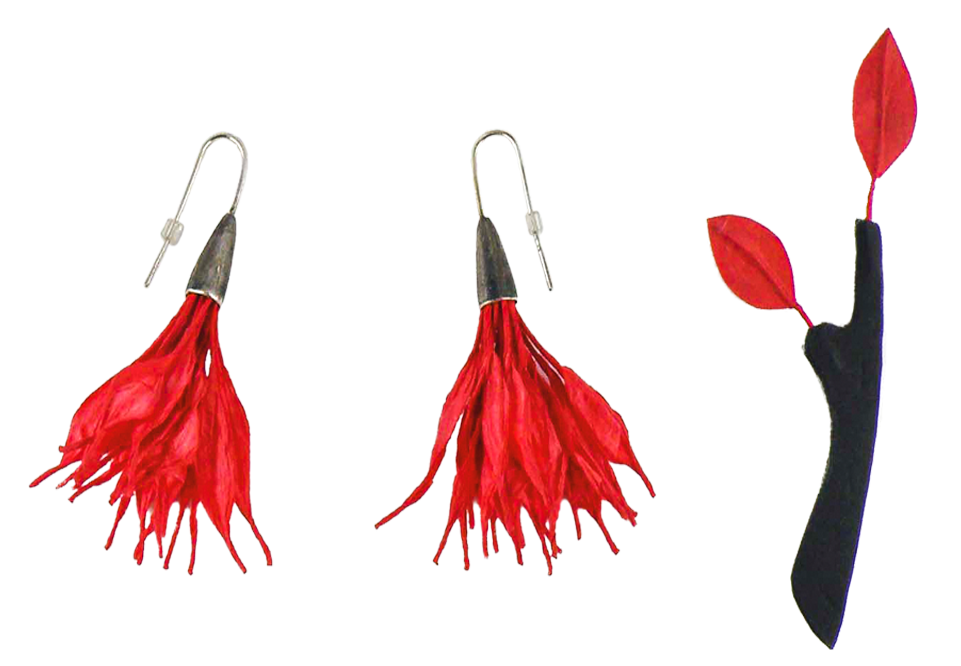
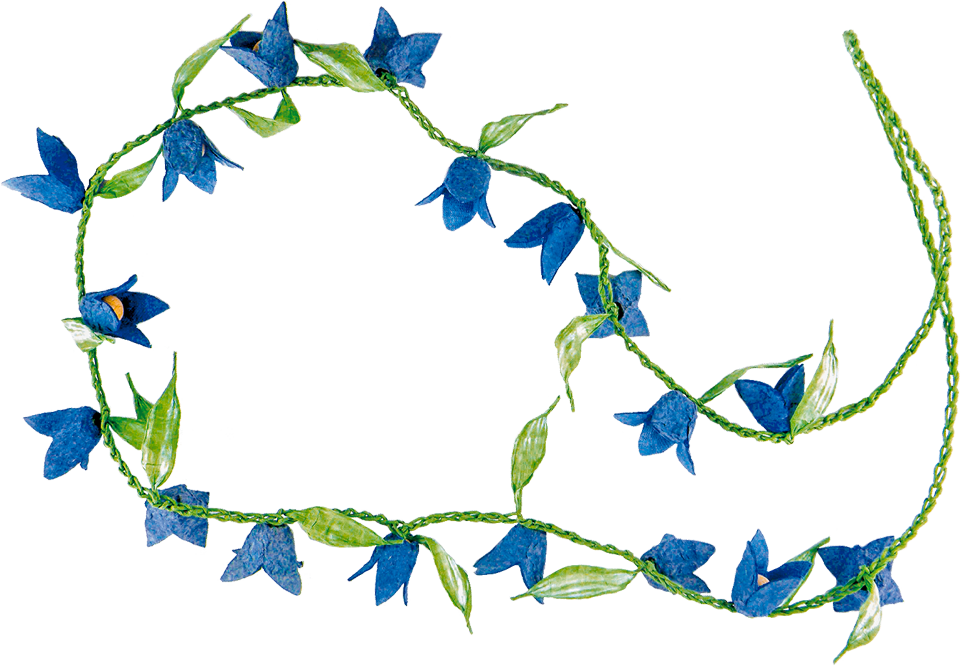
Paper may at first glance be an unusual material for jewellery,but offers very interesting design perspectives due to the variety of colours and the low weight. In addition, it is easily and cheaply available everywhere, most basic processing techniques are familiar. In addition to different coloured papers, Japanese papers and cartons, we also work with paper yarns in a variety of strengths. With silver for the technical parts This allows us to create completely new pieces of jewellery. This course expands and complements recent year's course by adding new materials and techniques and is suitable for participants of the last courses as well as for those attending for the first time.
Course instructor: Bea Benedetti has completed a goldsmith’s apprenticeship; she still works in this profession, but has been increasingly turning to organic and textile materials for several years, especially paper as a jewelry material, and has deepened her knowledge at the Course Centre for Crafts at Ballenberg.
8 Traditional Japanese Techniques
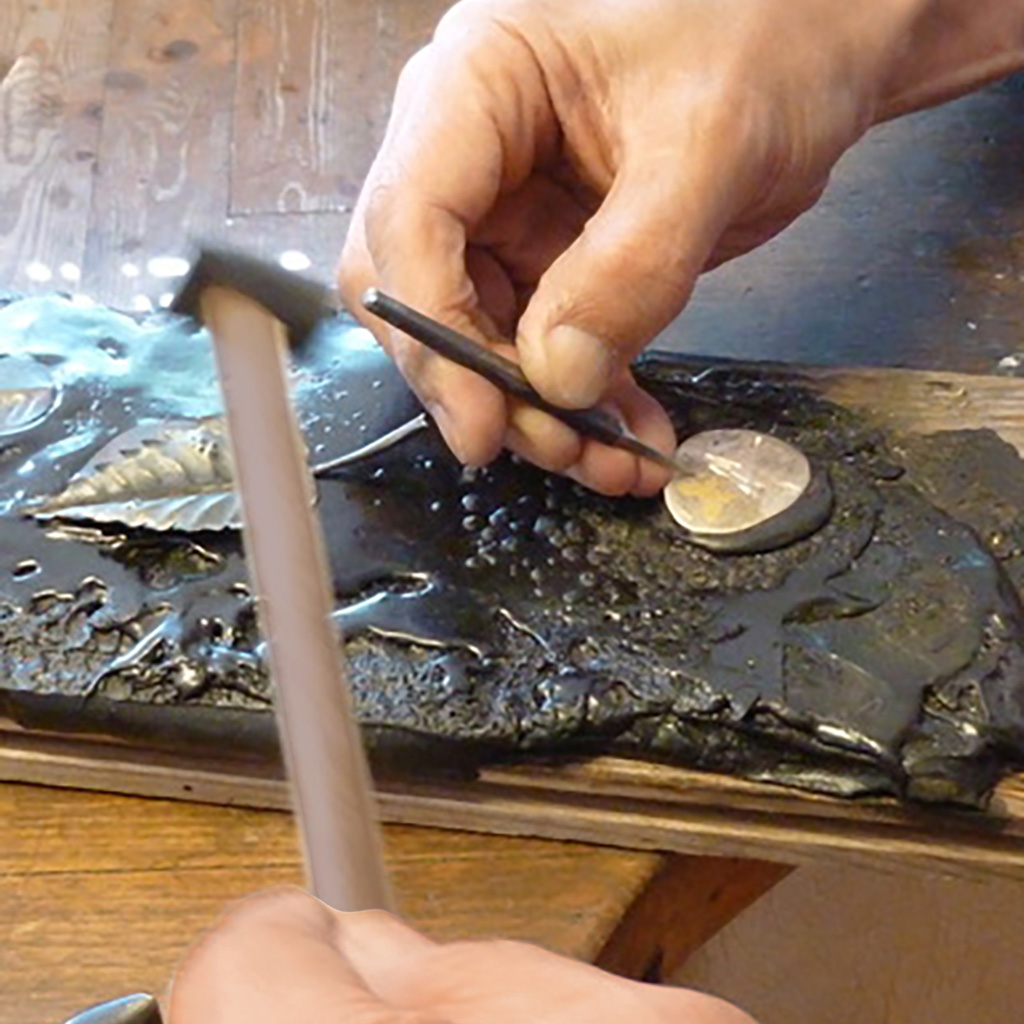
Nunome Zogan
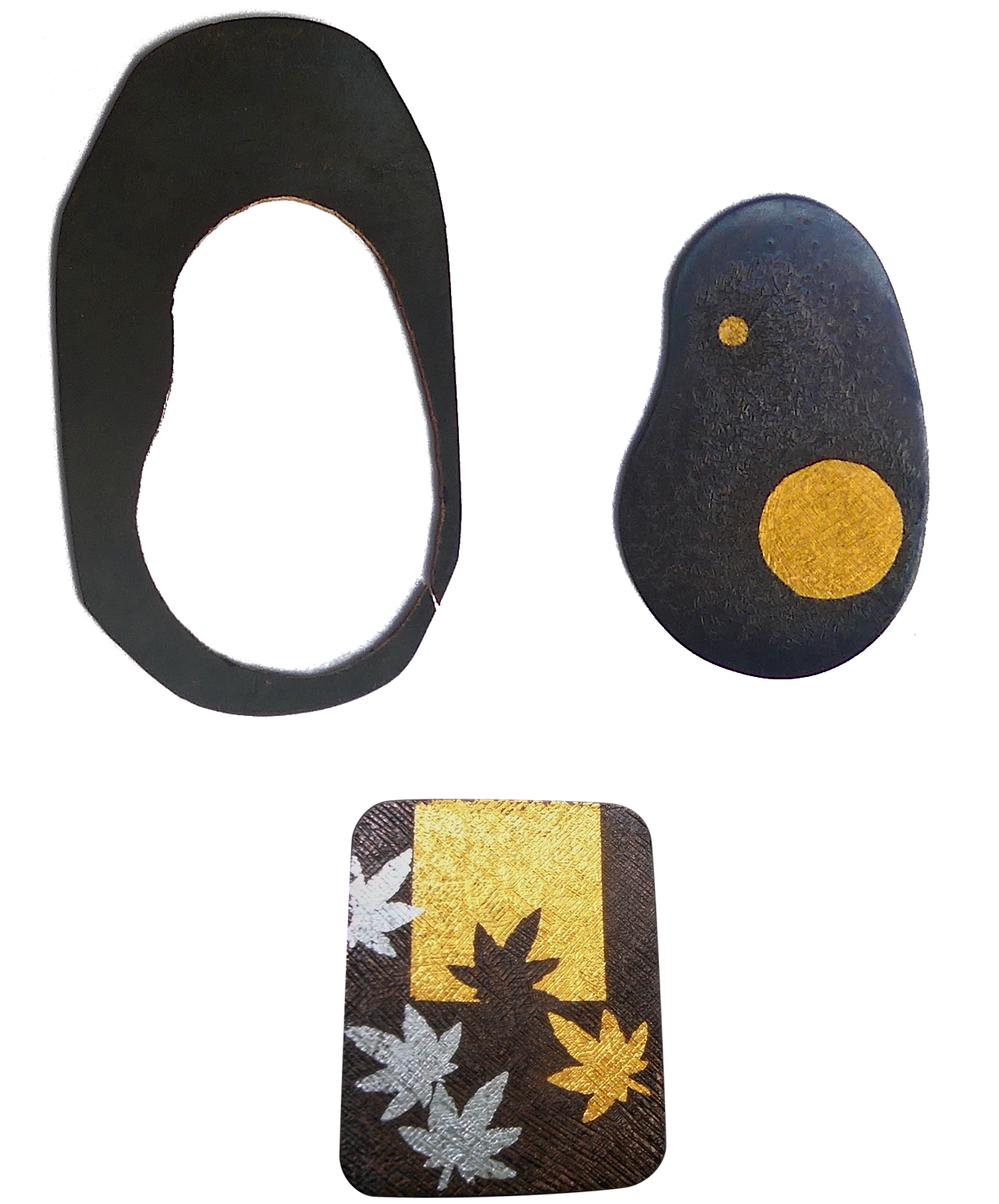
Nunome Zogan results
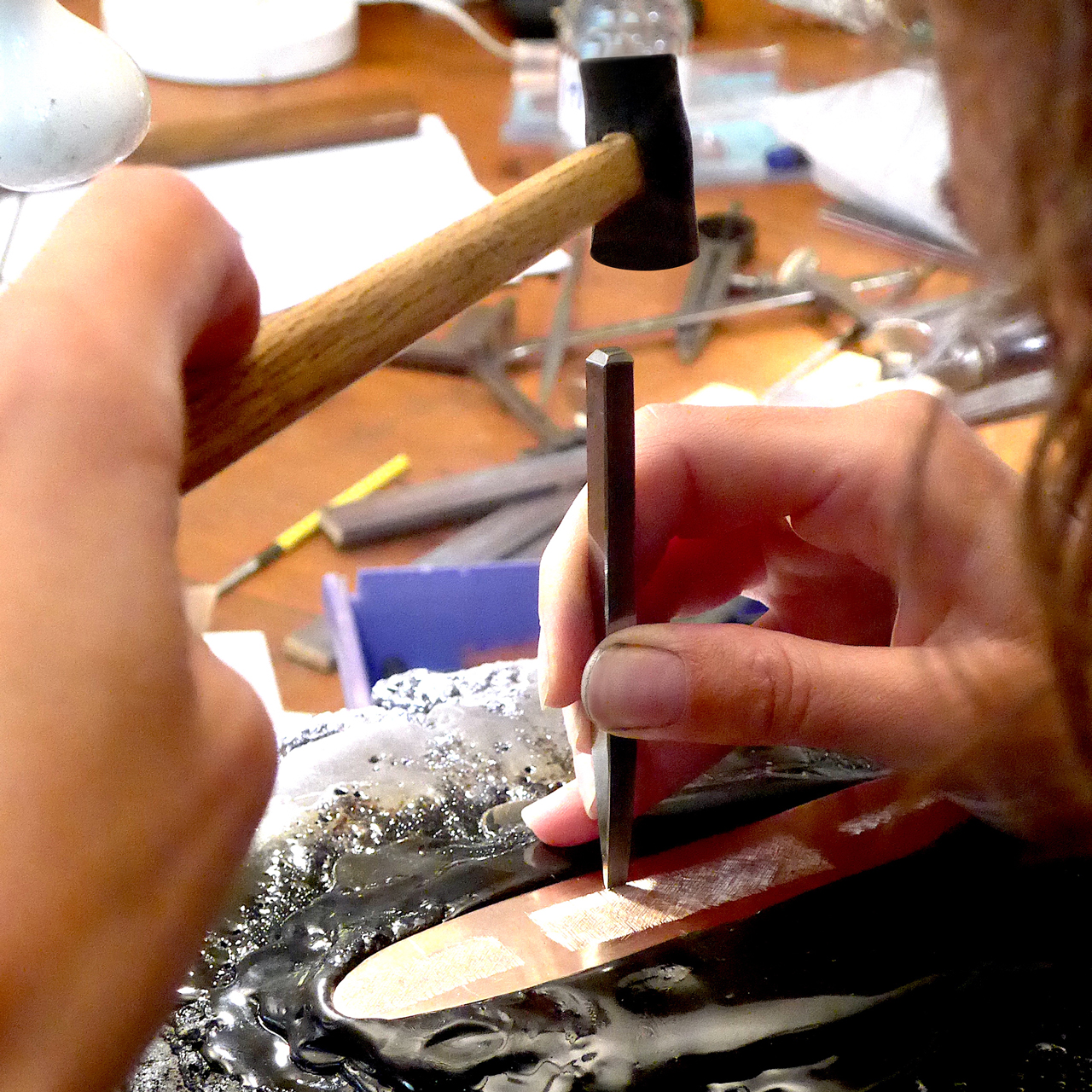
Nunome Zogan
Elisa Deval will show the participants how to make a traditional Japanese metal alloy. Shiro Shibuichi is a term for copper alloys containing silver. surfaces like Nunomezogan will be shown and practised. The piece of metal to be worked on is fixed in chasing cement, then the surface of the parent material is roughened with a sharp little chisel and following that, a thin metal foil is battened into this structure and hammered flat. The art of line Inlay and the japanse way of engraving becomes part of the lecture. Finally, various pagination methods will be presented and used.
Course instructor: Elisa Deval studied in Alchimia Contemporary Jewellery School in Florence. 2009 she started a research project on local metal techniques in Japan, especially the Nunome Zougan inlay technique as a student of Prof. K. Kageyama, Starting 2014 Elisa Deval joined Alchimia’s team where she teached jewellery making, continuously giving workshops on Nunome Zougan and the colouring of Japanese alloys. She expands the topic of traditional Japanese techniques and set new, own accents www.elisadeval.com
9 Argentium & Keum Boo
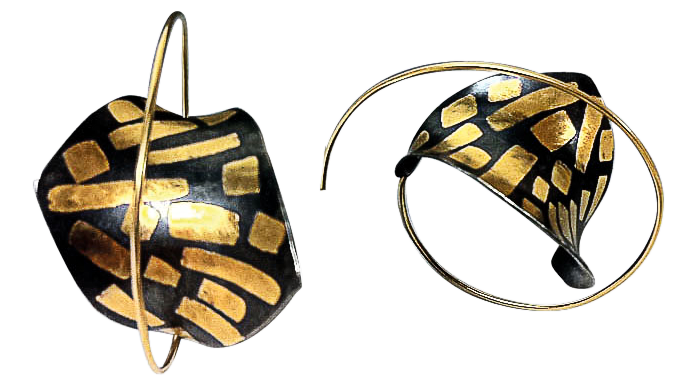
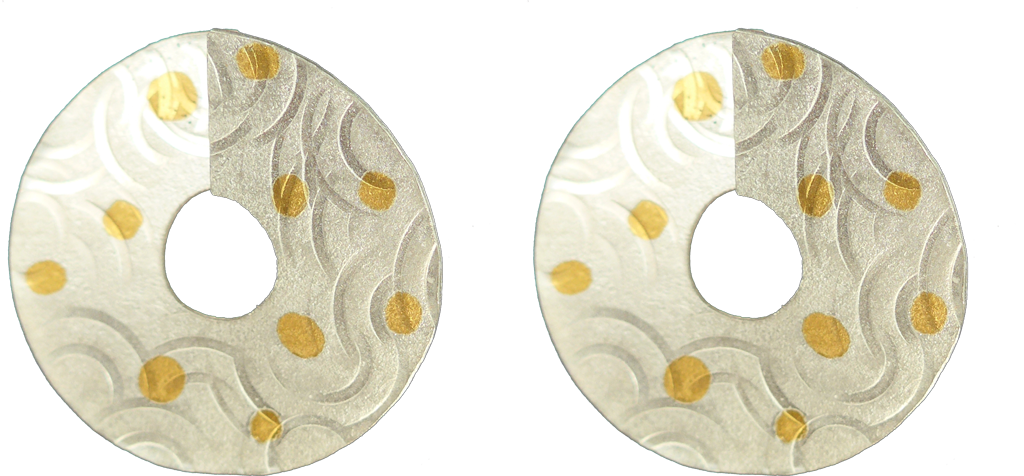
Examples: Argentium Keum Boo
Argentium is a new, patented sterling silver alloy with the semi-metal germanium. Argentium can be welded without solder, this silver alloy has a high starting capacity, increased toughness, increased thermal and electrical resistance and environmental benefits. The participants learn how to weld and process the parts without solder on various self-designed pieces of jewellery. Argentium can be obtained. During the class, it’s only slightly more expensive than regular sterling silver
Keum Boo: A 0.02 mm thin thin gold sheet can also be bonded over a large area with Fine Silver or Argentium without solder. This fascinating technique, originating from Asia, works with the help of a stove plate at about 400 degrees C. through an intensive molecular connection of the two metals. After applying the fine gold pads, the parts can be further processed into a piece of jewellery.
Course instructor: Christine Zock is Certified Master Bench Jeweler specialised in Argentium and Keum Boo
10 Repoussé Chasing or embossing
This course teaches how hollow jewellery can be created. While just using simple tools, traditional and new techniques can be tried out and combined. Techniques such as compressing, squeezing, deep-drawing, forging, and special wax techniques are demonstrated and used. For example, it will be shown how hollow bangles can be made as single pieces or as a small series. The high precious metal prices make such a method of creation very attractive.
Course instructor: Georg Schulte Master goldsmith, instructor for various Techniques at the European Trade Academy in Ahlen and head of a goldsmith studio
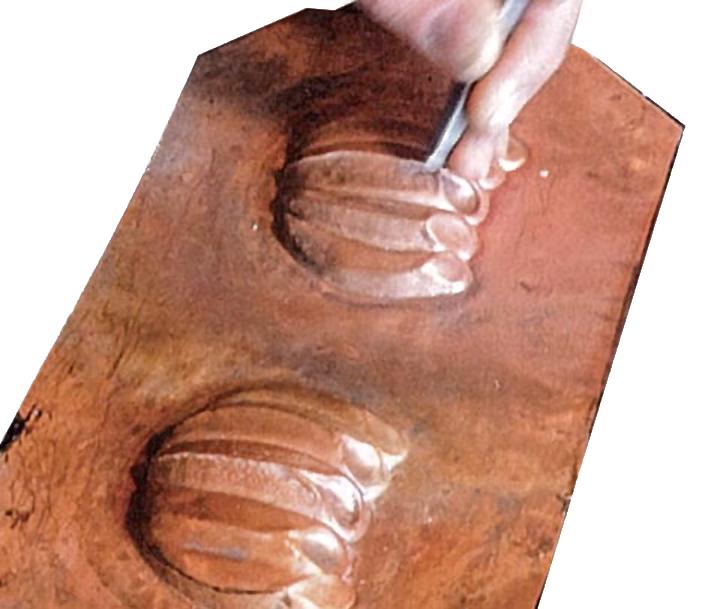
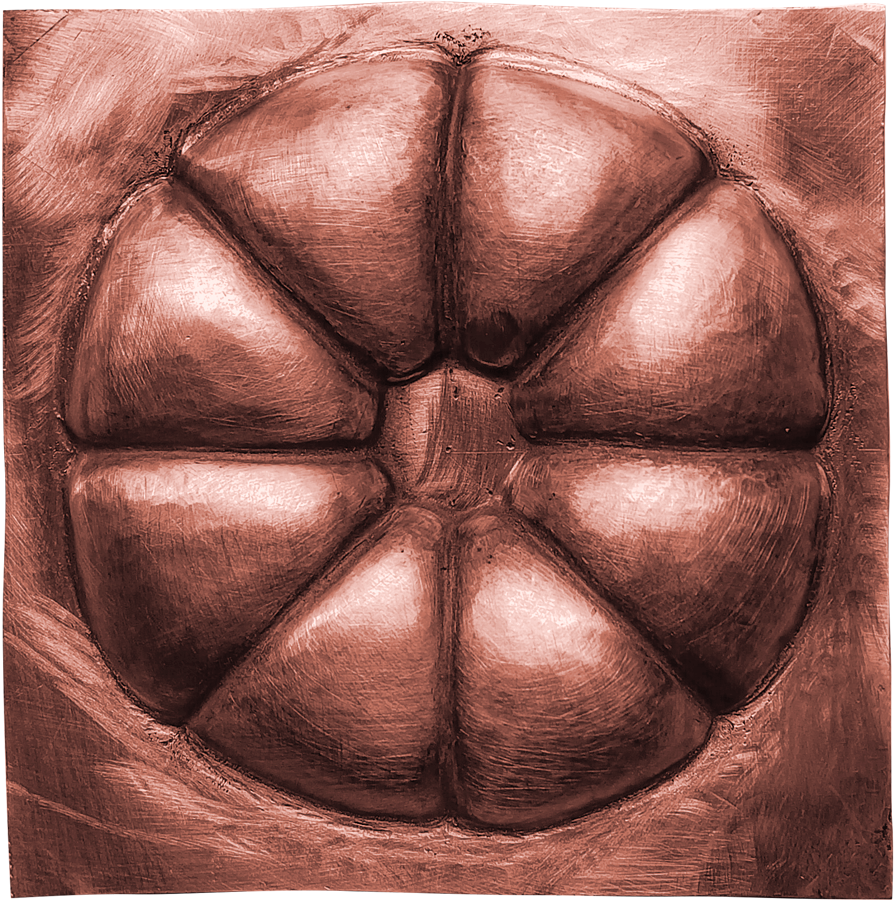
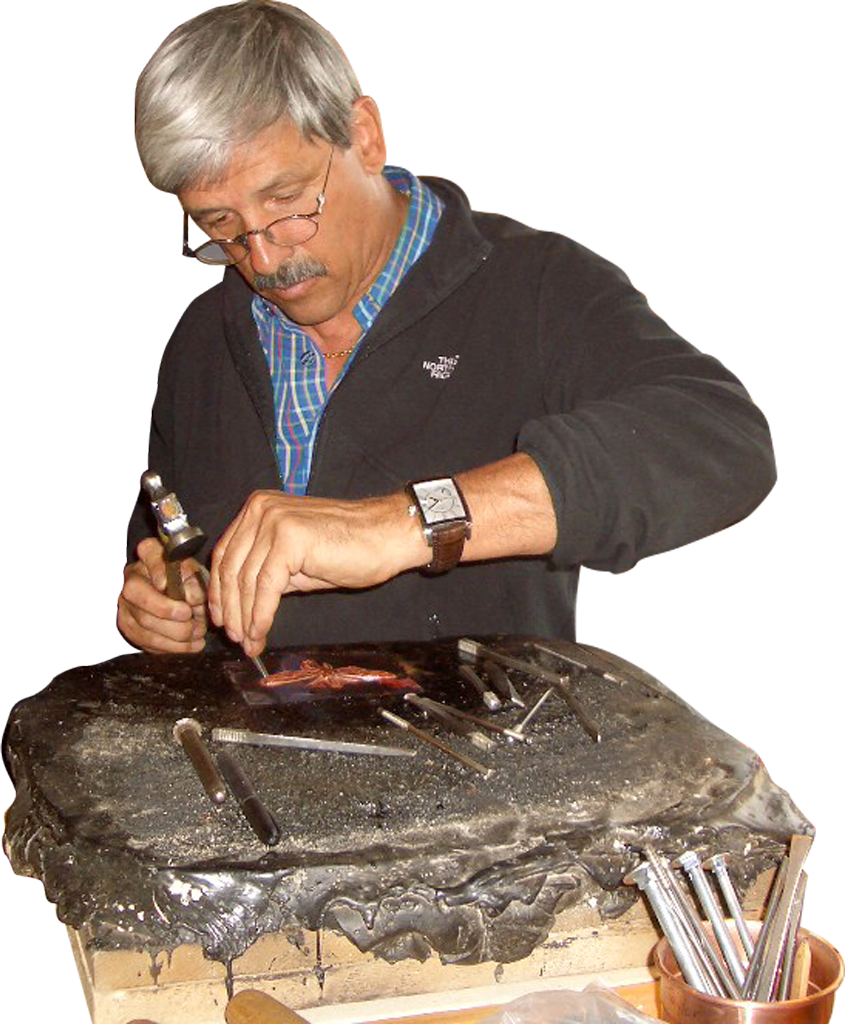
11 Hollow shapes and Folding techniques in jewellery
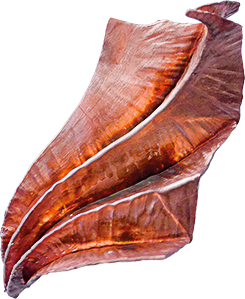
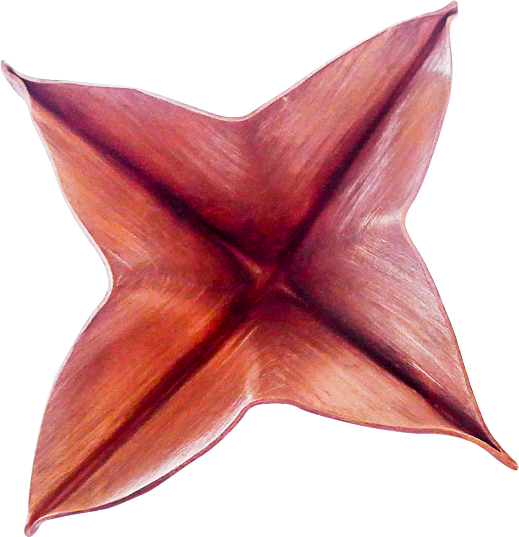
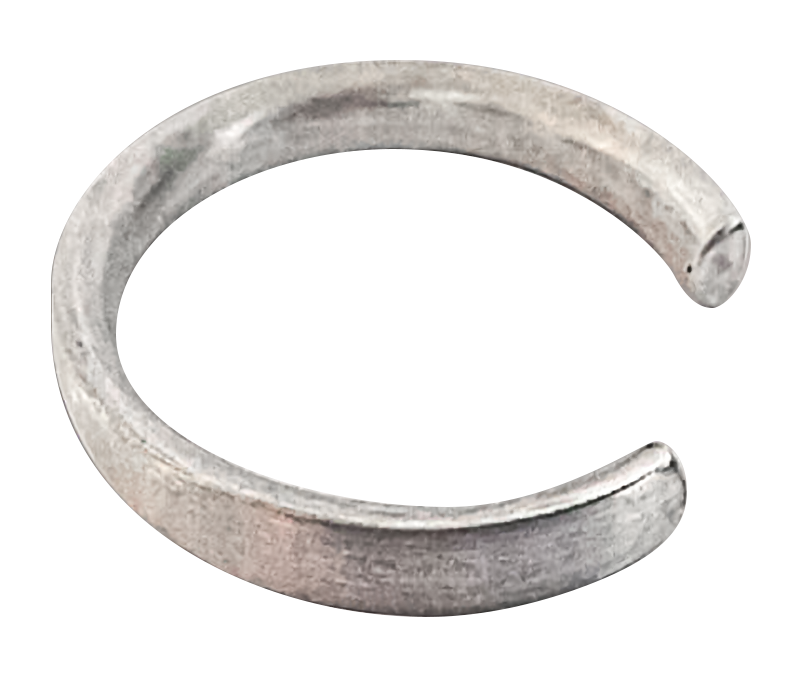
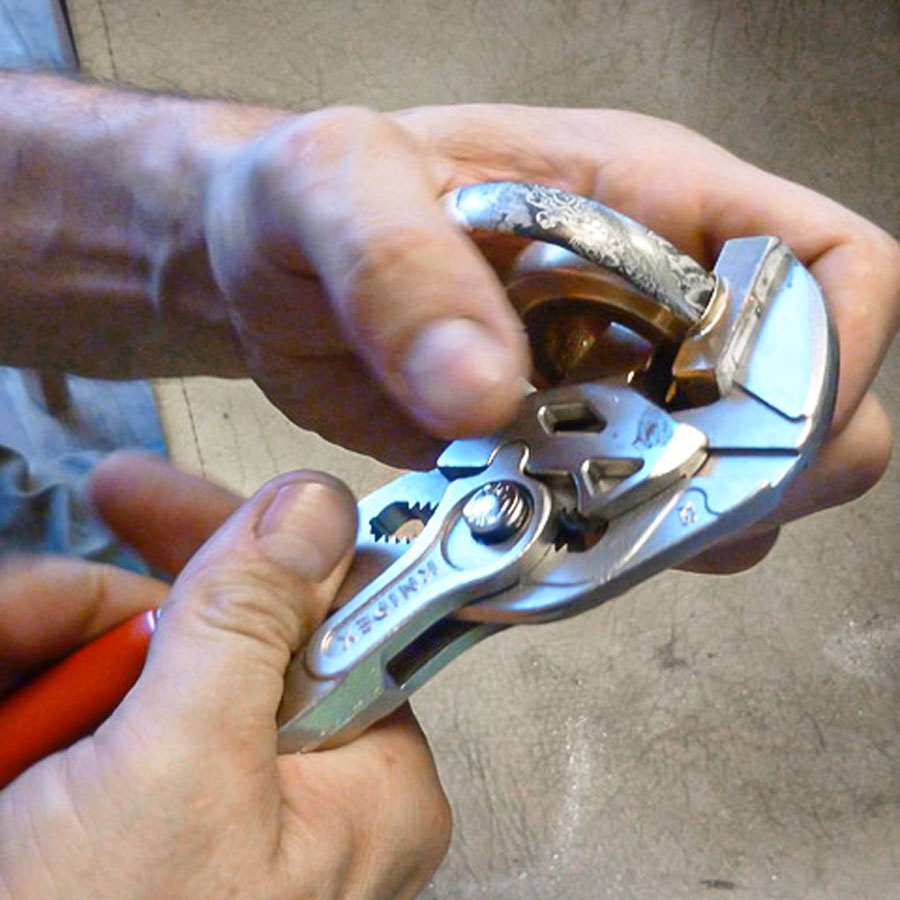
This course teaches how hollow jewellery can be created. While just using simple tools, traditional and new techniques can be tried out and combined. Techniques such as compressing, squeezing, deep-drawing, forging, and special wax techniques are demonstrated and used. For example, it will be shown how hollow bangles can be made as single pieces or as a small series. The high precious metal prices make such a method of creation very attractive.
Course instructor: Georg Schulte Master goldsmith, instructor for various Techniques at the European Trade Academy in Ahlen and head of a goldsmith studio
Materials and Tools:
Participants have access to an extensive range of materials for the realization of jewellery. Materials are paid according to individual use at the end of the course. Some classes have a flat rate for materials. Tools are provided in all classes. Special tools can be purchased after the Workshop.
Application & Signing up:
The Price of € 790.- includes only class fee and the use of Tools. Participants have access to an extensive range of materials for the realization of jewellery. A flat rate is charged for the basic course material. Additional Materials are paid according to individual need at the end of the course. Tools are provided, some special tools can be purchased after the Workshop. Own Materials and Tools can be used as well.
The confirmation of your registration will take place immediately if a place is available. Reservations become valid with the receipt of a deposit of at least 25% of the course price within 14 days after receipt of the registration confirmation. The remaining amount must be received by the Design Werkstatt at least 1 month before the start of the course. If you withdraw up to 1 month before the start of the course, a processing fee of 25% of the course price will be retained. After that, there is no entitlement to reimbursement, unless the participant who is unable to attend provides a suitable replacement. Travel, accommodation, food and insurance are the responsibility of the participants.
If a course has to be cancelled by the Design Werkstatt, amounts already paid will be refunded in full.
Information:
Design Werkstatt
Felix Urs Stüssi
Zasiusstrasse 106a
D-79102 Freiburg, Germany
phone (00)49 761 706 713
info@stuessi.de • www.stuessi.de
Mobile (00)49 0178 671 72 08
